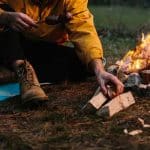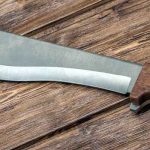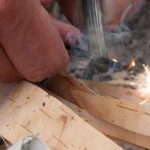What tools do you need for bushcraft? You can bring as many or a few tools along as you want. The decision comes down to how experienced and comfortable you are with bushcraft.
The idea behind bushcraft is that you use the natural world to help you survive in the wilderness without disturbing nature too much. Ideally, any tools you bring should have a minimum impact on the natural world, per the bushcraft philosophy.
An essential tool is a knife. However, plenty of other implements can aid your comfort and survival. There is nothing wrong with being prepared in bushcraft. Over time you may naturally learn the skills necessary to craft more while out in nature. Many experienced bushcrafters only need a knife.
In this article, I will discuss the essential tools for bushcraft and some optional choices. Some of these tools are best for beginners, while others work for any experience level. Read on to learn about the best tools for bushcraft.
Best Tools for Bushcraft
The tools you need depend on your experience and comfort levels with bushcraft. While a knife is always essential, there are many other tools to bring along with you. Some of these tools are difficult to re-create in nature. Here are some of the best tools to bring along with you.
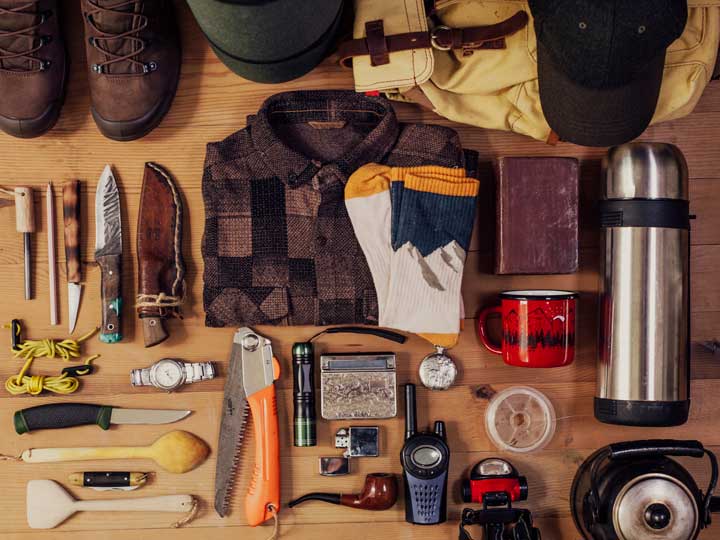
Knife
The right knife is the single most vital tool in your bushcraft artillery. This simple tool can help you collect supplies, hunt, start a fire, and prepare food. Some hardcore bushcrafters take nothing but a single effective tool with them. Knives used in bushcraft are small, durable, and flexible, making them ideal for fine work. Larger machetes are great for large motor tasks, such as cutting through brush. As a result, you may want to bring both a small bushcraft knife and a machete.
Axe
A small axe or hatchet is a great tool to have with you in the woods. This tool helps make shelters and chop firewood. An axe can cut down the time you spend preparing your shelter. Bushcraft axes are often on the smaller side.
Multi-tool
A multi-tool may contain several of the items on this list. It can be an efficient way to carry a bevy of tools without weighing yourself down. Some of these tools are similar to a swiss army knife, while others are larger, similar to an axe.
Fire starters
Some purists believe you should rely on the world around you to start a fire. While using the brush and the wood around you is a viable choice, having some backup is a good idea. Ready-made options, such as flint, ferrocerium rods, and other fire starters are easy-to-carry option that can help you start a fire. As you first begin, you may also want to bring other lighting methods and some tinder or char cloth.
Pot
While you can whittle your pot, bringing one with you can improve your time as you adapt to bushcraft. This tool can help you cook food, purify water, and carry foraged items. Once you become more experienced in bushcraft, you can try making your pot. Depending on your environment and comfort level, you may want to bring other water purification tools along.
Containers
Often you can make containers out of bark, bamboo, or certain other plants. However, bringing some with you can increase sanitization. Bring containers for foraged foods and purified water. These may include metal canteens, upcycled containers, and Tupperware.
Proper Clothing
The clothing you wear while engaging in bushcraft can be just as essential to your well-being as the other tools on this list. Choose comfortable, durable items. Natural fibers are a popular choice amongst those who wish to stay close to nature, but synthetics also have their functional benefits. Ensure you have warm enough tops, pants, underwear, socks, and outerwear so that you can stay warm at night.
First Aid Kit
With all of these sharp tools around, not to mention nature itself, a first aid kit is an essential addition. Some first aid kit essentials include gauze, antiseptic salve, splint, medications, small scissors, tweezers, burn balm, and a tourniquet. Ensure the kit is water and puncture-proof.

Bag
The right bag is essential when carrying these tools with you. Often the bag need not be very large. It only needs to be big enough to hold your tools. A backpack provides good weight distribution and allows you to carry more. Look for one with plenty of pockets for easy access. Most importantly, your backpack should be durable and waterproof.
Optional Tools for Bushcraft
While the above tools are tough to recreate in nature, the following tools are often not brought along by experienced bushcrafters since they are easier to replicate. However, many beginners benefit from bringing these bushcraft-building tools along.
Saw
Often, if you have a knife or machete, you do not need a saw. However, they can be helpful when cutting wood and clearing brush. Some people favor a saw over an axe or machete due to their functionality. For a compact choice, consider a folding saw. As with any sharp tool, it is essential to store your saw safely.
Cordage
Cordage, such as twine or cord, is an essential tool that can help you create a bear bag, shelter, and snares. Those experienced in bushcraft may make their cord out of natural materials. However, that is an advanced skill, and if you are a beginner, bringing some along is a great idea, since it allows you to see how vital cordage can be.
Compass
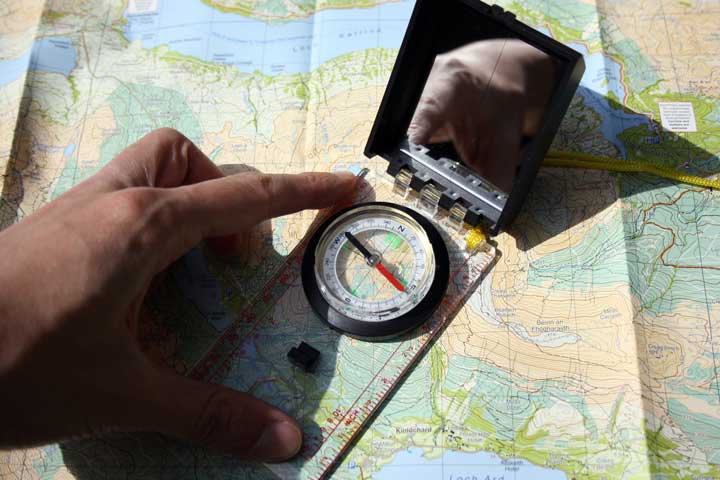
Depending on where you go, you may not need a compass. Some people who do bushcraft prefer to navigate using other methods, including the stars. However, if you are new to bushcraft or visiting a new area, it is a good idea to have a compass as a backup. You can also bring a map if you need one.
Shovel
You can use other tools to replace a shovel. However, a small shovel is good when you are just starting. If you choose to bring a shovel, you can use it to dig a latrine or to dig for roots. In some environments, you may even want to use a shovel to help build a shelter or drainage ditch.
Whittling Tools
Whittling tools are fun, and you can apply them to many tasks. They are a great help if you want to create a bow and arrow, whistle, pipe, walking stick, and more. As you go, you can even start making some of the other tools on this list. Bushcraft wood tools are small knives with shapes to suit different needs.
How Do I Know Which Tools Are Right for Me?
If you want to find out which bushcraft tool kit is best for you, assess your needs as a novice in the world of bushcraft and look at the environment you want to explore. Start with a good knife and add on tools from there.
It is often a good idea to test different skills before venturing into the wild. For example, you may want to go camping with a tent and some food and bring along some bushcraft utensils to practice your skills.
The best bushcraft skills to start with include making a fire, fishing, finding water, navigating, and foraging. Look out for any holes in your preparedness and hone the missing skills over some time. Remember, never eat something you forage unless you can identify it with 100% accuracy.
Try these skills as you experience regular camping and slowly integrate them into your skill set. Only go full-on bushcraft as a beginner if you go with someone with a lot of experience.
Frequently Asked Questions
When developing bushcraft skills, it is essential to ask plenty of questions and learn along the way. Here are some of the most frequent questions about bushcraft and its associated tools.
What are the five Cs of bushcraft?
The five Cs of bushcraft are cutting, combustion, cover, containers, and cordage. Knowing these five words can help you determine the essential items to bring as you bushcraft. Ensure you can cut things, start a fire, cover your shelter, hold foraged items, and tie objects with cords.
How do I choose the right tool brand?
There are plenty of tools for bushcraft out there. So, it can be tough to pick the right one. When looking for a tool, look at plenty of reviews, research using trusted sources, and, if possible, try out some options at the store or with a friend. Sometimes it can take trial and error to find the right choice.
Final thoughts
When you engage in bushcraft, your main task is to make the most of the world around you. To find food, water, create a shelter, and more, it is essential to equip yourself with the right tools. As a beginner, it doesn’t hurt to be overly prepared.
Once you become more experienced with bushcraft, you can hone your knowledge of the right tools for your circumstances. In some cases, you’ll need more or fewer tools than those on this list. Explore my website to learn more about bushcraft tools and techniques.

